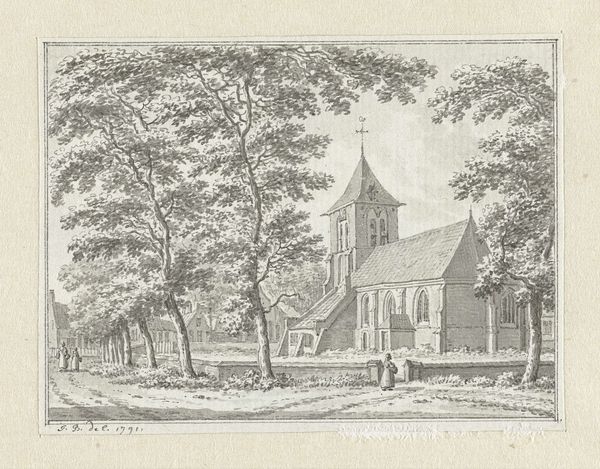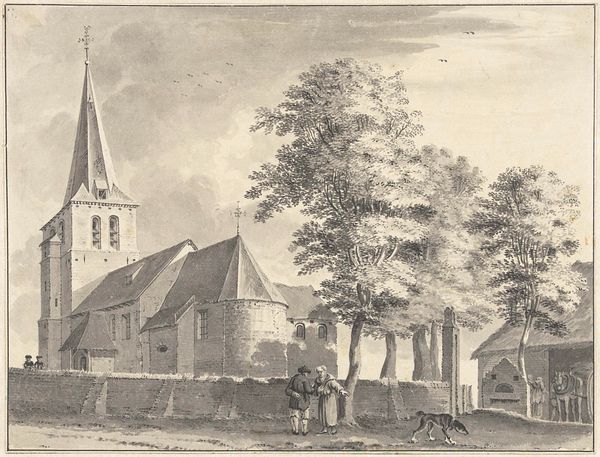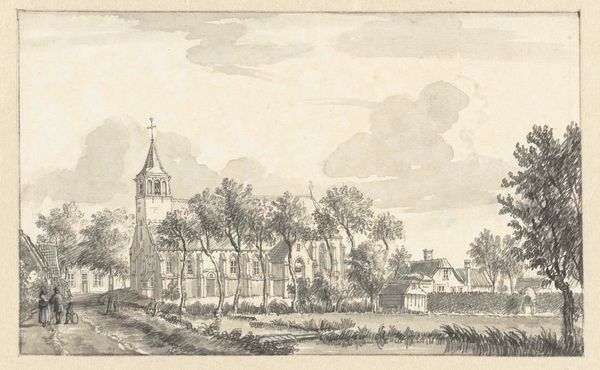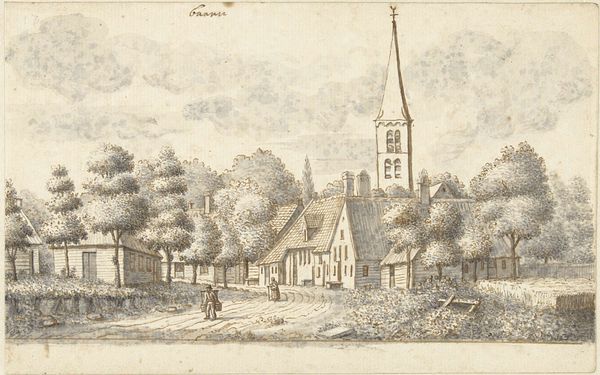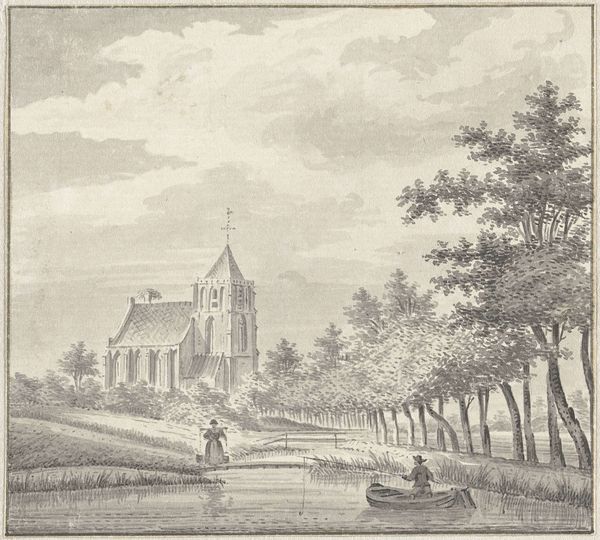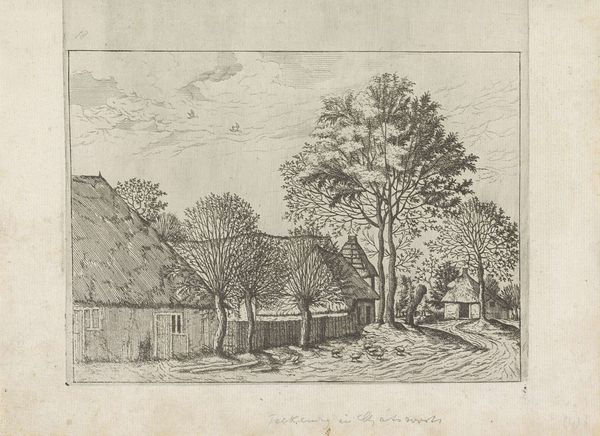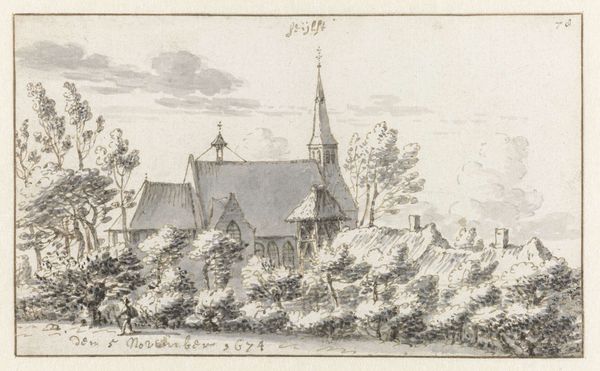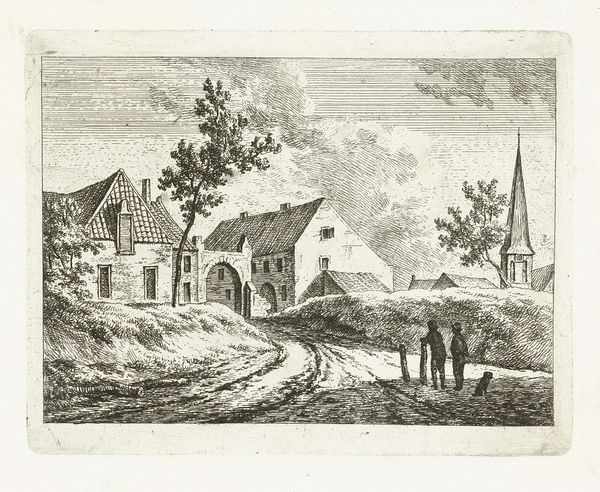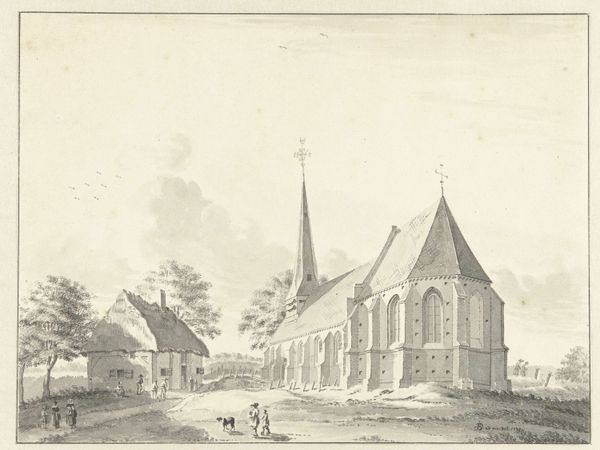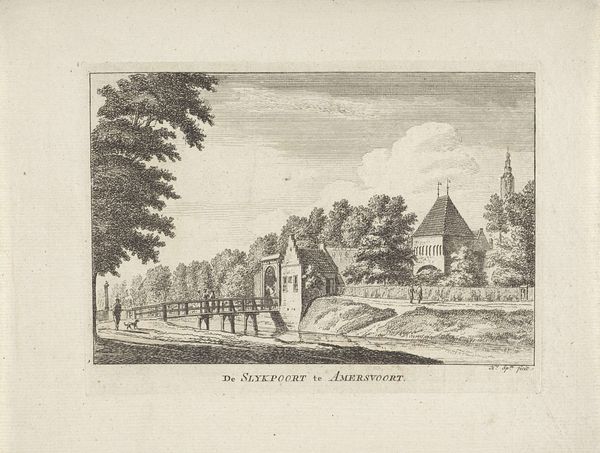
print, engraving
#
dutch-golden-age
# print
#
landscape
#
15_18th-century
#
engraving
Dimensions: height 145 mm, width 207 mm
Copyright: Rijks Museum: Open Domain
Curator: There’s something so quietly majestic about this image. What’s your immediate take on it? Editor: Serene. A gentle peacefulness pervades the whole scene. You could almost step right in and breathe the air of a simpler time, almost idyllic, really. Curator: You know, this is "View of Enspijk," an engraving dating back to somewhere between 1734 and 1817, created by Philippus van der Schley. It encapsulates a typical Dutch village scene. The engraving as printmaking format enabled the circulation of landscapes like these, did you know? Editor: Yes! Which makes me think about who this landscape served, its role for that society... The way it monumentalizes what is otherwise mundane says something. Curator: It does, doesn’t it? It highlights how civic pride intertwined with religion, the church being so prominently placed. The tiny figures seem almost secondary. What draws me is the attention to light; Van der Schley really captures the way the sun filters through the trees, giving the entire scene a luminous quality. Editor: The figures contribute though—they add to this feeling of an established society at work in this scene, it provides us access to consider gender and class... Though diminutive, their presence roots us to the idea of community in a particular place and time. And yet the work itself flattens, universalizes them, don't you think? Curator: Perhaps, but I find them reassuring. A sense of permanence, continuity, and harmony. That feeling of nostalgia I sensed initially probably originates from this. This little village will go on. Editor: An imagined stability perhaps. It speaks volumes about the 18th-century mind, its relationship to place, social structures, even artistic production and consumption. And its assumptions! Fascinating! Curator: Definitely! What seemed initially like a quaint depiction reveals complex dimensions—a potent window into a world gone by. Editor: Indeed. These rural depictions acted like records and fantasies together. It provides viewers so much material to delve deeper into, centuries after its creation.
Comments
No comments
Be the first to comment and join the conversation on the ultimate creative platform.
